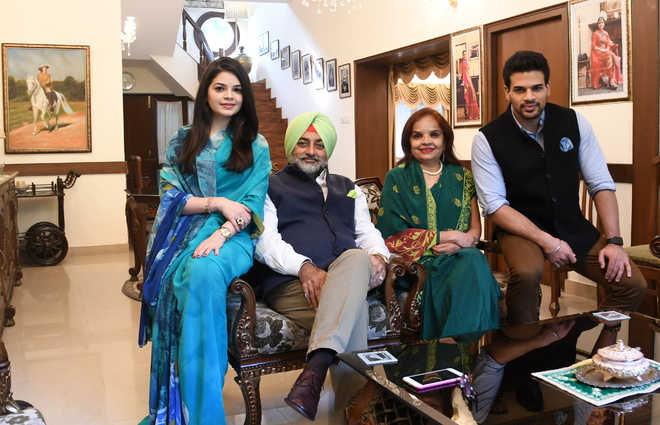Manpriya Singh
The royal families of India have repeatedly charted controversies, quite often mystery, and at all times awe. Famous for their extravagant lifestyles, captured aptly only in Bhansali’s period dramas, and infamous for their weird obsessions… we get knocking on the doors of those in the city with a royal connect.
Hill connect
Vibhuti Rajyalaxmi Jandev, born and brought up in Kullu in a blue-blooded family from the erstwhile state of Suket in Himachal Pradesh, lets out a loud laugh when she says, “I feel as common as a commoner now.” Married into the royal family of the erstwhile state of Balson in Shimla district, she traces her lineage for us, “My great grandfather was the Prince of Suket. Our forefathers and families had made certain commitments, which are even now fulfilled in terms of rituals towards deities though they are performed in much simpler manner.”
Strict rules
Life remains similar, if not the same. As do the hobbies comprising horse-riding or reading. “When I got married into the family, we had to follow strict rules, for instance we always had to have a dupatta over our heads and we couldn’t go out alone, somebody always had to accompany us,” shares city-based Opinder Singh Sekhon married to Jotinder Singh Sekhon, whose ancestors were kiledars from the beginning till the reign of Maharaja Yadwinder Singh of Patiala; this apart from several other close royal connections that run in the family.
While life, more importantly the lifestyles, have evolved borrowing heavily from today’s urban India, there is an effort at continuity. She adds, “Women in the family still wear traditional jewellery and traditional outfits during weddings and festivals. Traditionally speaking, men from Patiala royalty prefer pink turbans. We still take phulkari over our heads.”
Traditional touch
Mention gown or several other designer silhouettes that have trickled into Indian-wear and laughs Tikka Sangram Singh, “They are actually looked down upon.” At this point in time, he has an interesting, rather an amusing story to share. “After her marriage, when my grandmother landed in Nawanshahar in a purdah carriage, wearing a saree, my great grandmother was horrified to see her in a saree and immediately she was made to change into a ghaghra, because that’s what women in the family wore at the time,” laughs the practicing lawyer, was brought up in Chandigarh and traces his lineage originally to Rajasthan. “My grandfather was the last Rana of Jadla Estate.”
if we were to go back a little further, his 18th generation ancestors were close associates of none other than Akbar, he adds.
Changing times
Tikka Gaurav Chand Parihar, whose great-grand father was the ruler of Khaneti, says, “We still have personal temples where only village people can come. Currently there are 250 royal families in India and they all have different traditions. Some sections follow them stringently, while others have gone a little flexible. Whenever our area people buy any new car or house or somebody gets married, they still come to us to get blessings.”
Customs first
As for matrimonial alliances, that is still preferred within the members of the royals only. “That is for the continuity of the customs and that pretty much happens in most communities in India,” Rajmata Deeplata Singh, who traces her ancestry to Bhadoo Basuli Estate gets candid. She adds, “Till late 18th century my grandfather was the magistrate there. As for my father-in-law, he was the Maharaja of Trilokpur,” shares the lady, whose husband died in 1990. She is currently working in Little Flower Convent School in Panchkula.
manpriya@tribunemail.com
Unlock Exclusive Insights with The Tribune Premium
Take your experience further with Premium access.
Thought-provoking Opinions, Expert Analysis, In-depth Insights and other Member Only Benefits
Already a Member? Sign In Now










